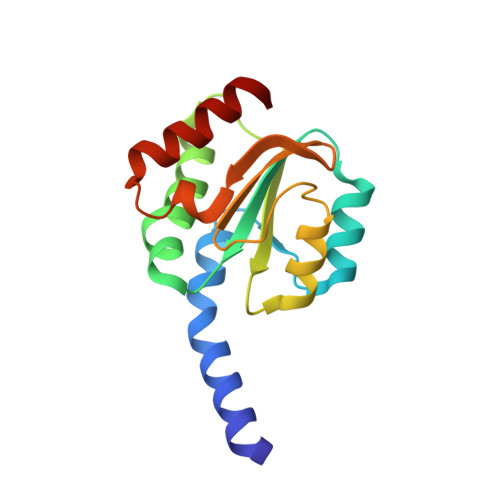Structure and function of Bacillus subtilis YphP, a prokaryotic disulfide isomerase with a CXC catalytic motif .
Derewenda, U., Boczek, T., Gorres, K.L., Yu, M., Hung, L.W., Cooper, D., Joachimiak, A., Raines, R.T., Derewenda, Z.S.(2009) Biochemistry 48: 8664-8671
- PubMed: 19653655
- DOI: https://doi.org/10.1021/bi900437z
- Primary Citation of Related Structures:
3FHK - PubMed Abstract:
The DUF1094 family contains over 100 bacterial proteins, all containing a conserved CXC motif, with unknown function. We solved the crystal structure of the Bacillus subtilis representative, the product of the yphP gene. The protein shows remarkable structural similarity to thioredoxins, with a canonical alphabetaalphabetaalphabetabetaalpha topology, despite low amino acid sequence identity to thioredoxin. The CXC motif is found in the loop immediately downstream of the first beta-strand, in a location equivalent to the CXXC motif of thioredoxins, with the first Cys occupying a position equivalent to the first Cys in canonical thioredoxin. The experimentally determined reduction potential of YphP is E degrees' = -130 mV, significantly higher than that of thioredoxin and consistent with disulfide isomerase activity. Functional assays confirmed that the protein displays a level of isomerase activity that might be biologically significant. We propose a mechanism by which the members of this family catalyze isomerization using the CXC catalytic site.
- Department of Molecular Physiology and Biological Physics and the ISFI PSI2 Center, University of Virginia School of Medicine, Charlottesville, Virginia 22908-0736, USA.
Organizational Affiliation:

















